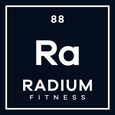
Don't knock the cooldown
If you just jump in the shower after you work out, you could be messing with your mind…and your body. The ritual of a cool down helps with your mental clarity. Think: “I just killed that workout and I’m awesome.” Additionally, finishing up with a cool-down with a few minutes of low-intensity exercise also helps to support and strengthen muscles which will prevent injuries.
Skipping a stretch after a workout forces your muscles that were just pumping to tighten up, increasing your odds for injury (not to mention achy muscles). If you’re a serious athlete or a marathon runner, cooling down is even more important for you because it helps to regulate your blood flow, balancing your flow and helping you to recover.
Many of the cardio machines in the gym have a built-in cool down, so all you have to do is just stay on the machine until the very end of your workout. If you press the “quickstart” or just start working out on the machines without one of the pre-programmed workouts or do your workout outside, these tips will help you slow down and cool it down.
Take it Steady: Suddenly stopping or slowing is not the right way to make sure your body balances out. This can cause you to get dizzy, and in extreme cases, can lead to blackouts. You might have felt this if you finish a run and immediately get off the treadmill. Once you’ve completed your workout, decrease your pace in increments over three to five minutes to get your heart rate back to a normal pace and to get your blood and oxygen flow back to a resting rate.
Stretch it out: On busy weekdays or when you are in a rush, stretching may feel like a waste of time, but this is a great time to work on your flexibility since your muscles are warmed up at this time. Take five minutes to cool-down. A combination of leg, back, hip and shoulder exercises should stretch out your muscles and keep you from getting stiff.
After Pumping Iron: Cooling down is even important after a strength workout. After lifting, try doing some dynamic stretches such as walking lunges or yoga poses. The key is to bring your heart rate back to a more normal rate (usually this is around 100-120 bpm).
